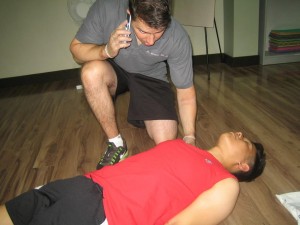All over the United States, CPR and first aid training is the most popular program offered by training providers. Training programs for healthcare-related topics are no longer monopolized by people in healthcare; even people who work in an office or stay at home often sign up for training. CPR is a universal topic that teaches students the importance of knowing how to manage cardiovascular and respiratory emergencies, which can be the difference between life and death for the victim.
Our providers are located in California, Hawaii, Nevada, Oregon, and Washington, is over 6 cities. Enrolling in any of our providers is very easy. Prospective trainees can use the online application form on the provider homepages or send in their application via e-mail or over the telephone. The staff at any of our providers encourage enrolment in person (during regular business hours only).
About the credentials
All of the CPR training programs with our providers are certification programs. Once the program is completed and the skills and written exams are passed, students are awarded credentials, either certificates or completion cards. These credentials expire after 24 months; trainees have to renew them before the expiration date. If ever a certificate expires and the rescuer wants to renew it, he or she will have to retake the training program. Expired certification is not honored for renewal at any of our providers.
Training in CPR and first aid

All basic CPR programs under Basic Life Support and even Advanced Life Support courses include basic first aid lessons. CPR and first aid always go hand in hand, with one usually requiring the other in majority of emergency situations. Basic CPR programs are offered under the umbrella concept of Basic Life Support. Basic Life Support teaches basic CPR skills and topics to trainees, either the general public or healthcare providers. Classes for the public and classes for HCPs are different from each other. Classes can run between four and four and half hours for BLS programs.
Heartsaver CPR (public)
The general public program teaches trainees basic CPR, AED usage, and first aid. AED is short for automated external defibrillator, a machine than sends out electricity to the heart in order to return it to its normal rhythm – called normal sinus rhythm. The basic skills covered by CPR training include how to adequately give chest compressions and rescue breaths, use the defibrillator, and variations of the Heimlich maneuver.
This program runs for 4 hours and does not have an available re-certification class. The certification skills test at the end of the program is optional.
Heartsaver CPR (healthcare providers)
Although this program follows the same topics on the basic CPR curriculum, it tailors the lessons for people who work in healthcare. The basic skills are also taught and developed under this program, and introduces trainees to different cardiovascular programs that can cause cardiac arrest. This program runs for 4.5 hours and does not have an available recertification class. This program’s post-tests are required to be taken and passed before a student is awarded a training certificate.